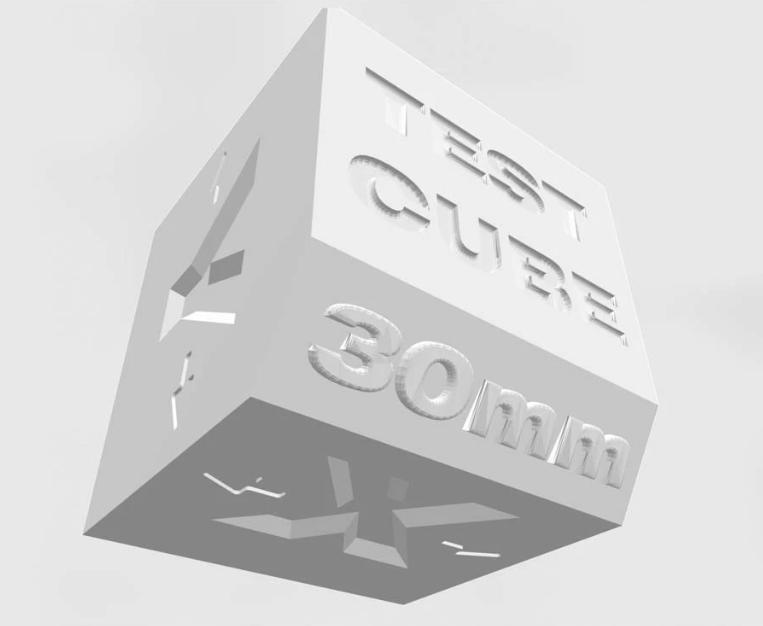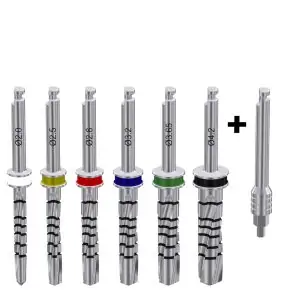3D Printers for Dentistry – Testing the Precision and Reliability of 12 Popular Models
In 2022, a large-scale test of dimensional accuracy was conducted among twelve 3D printers most commonly used in dentistry. The comparison of the dimensions of the 3D-printed model and its virtual counterpart was carried out. The resolution and accuracy of 3D model samples depend on a variety of factors, including the technology used, the size of the printing head/laser spot/screen resolution, assembly orientation, materials, geometric features, and their topology. The main goal was to determine how well devices with different approaches to printing, which vary in price several times, handle the task.
Key Points:
- The main goal of the study was to determine how well devices with different approaches to printing and varying costs handle the task.
- The accuracy of 3D models depends on a variety of factors, including technology, the size of the printing head, etc.
- The study showed that the current range of 3D printers can provide clinically acceptable levels of accuracy.
- No statistically significant differences were found between budget and expensive printers in the X and Z dimensions, but differences were identified for measurements in the Y dimension.
- All 3D printers are capable of creating reliable and reproducible models with high accuracy, surpassing traditional plaster model casting.
Equipment list
The study’s full data with all the details can be found through the provided link. The table below shows the list of 3D printers and their average prices.
| Num | Model 3 d printer | Approximate price $ |
| 1 | Ackuretta Sol | 5500 |
| 2 | Anycubic Photon | 300 |
| 3 | Anycubic Photon S | 500 |
| 4 | Asiga Max UV | 12 000 |
| 5 | Elegoo Mars | 300 |
| 6 | Envisiontec Vida HD | 27 000 |
| 7 | Envisiontec One | 7 000 |
| 8 | Envisiontec D4K Pro | 13 000 |
| 9 | Formlabs Form 2 | 3000 |
| 10 | Formlabs Form 3 | 3500 |
| 11 | Nextdent 5100 | 12 000 |
| 12 | Planmeca Creo | 22 000 |
Studying the accuracy of these printers that are of a wide variety of budgets.
Design
The present study involves some of the recently released 3D printers that have not yet been studied for their accuracy. Since these new printers will replace current models that may have been included in the previous studies in the literature, it is important to study whether they are statistically more or less accurate and to discuss whether these results are clinically relevant. For the purposes of this study, the use of a standardised printable object was used to measure the accuracy of these recent 3D printers.
Materials and methods
In total, 12 3D printers produced test blocks. All test blocks were printed using the same settings with 100 micron Z layer thickness and the print time set to standard where applicable. To measure the resulting blocks a digital measurement was taken using a Dentsply Sirona Ineos X5 lab scanner to measure the XYZ dimensions of each block produced on each printer using CloudCompare to measure the deviation compared to the Master STL. Each measurement was taken from the central axis of that dimension.
Results
When grouped into homogenous subsets, the cheapest 3D printers in the group, namely the Anycubic printers and the Elegoo Mars, are statistically not dissimilar to the higher priced Asiga Max UV or even the mid-priced Formlabs printers in the X and Z dimensions. However, the Envisiontec One and D4K Pro, Ackuretta Sol and Asiga Max UV were statistically superior in terms of consistently accurate Y dimension. Although these printers use different technologies to print, no specific type of printer technology is more accurate than the others.
Discussion
The null hypothesis was proved to be true, in that no significant differences were found among the various technologies of 3D printing regarding trueness and precision. The evolution of 3D printers that leads to budget printers being as statistically accurate, for at least two of the dimensions of data recorded, as expensive printers is remarkable. Whilst clear differences in the mean error between the printers were found, the performance of these printers is considered exceptional. Albeit, the Envision One, Envision D4K, Ackuretta Sol and Asiga Max UV printers performed the best with overall trueness under 35 μm.













